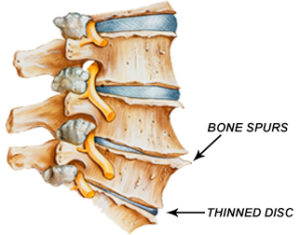What is spinal/facet arthritis?
Facet joints work to connect and stabilize the spinal bones. They function to prevent excess movement, and in doing so, help to prevent injuries and protect the spinal cord. The facet joints serve to allow for twisting which is needed for daily activities. us to twist our back, look around, and perform daily tasks.
The facet joints deteriorate over time resulting in arthritis. This deterioration is expedited if a person experiences any form of trauma to the spinal column. As a result of this deterioration patient can at times experience discomfort.
Risk factors for facet arthritis: Obesity, family history of arthritis, overuse secondary to work or sports, age and injury.
Potential symptoms that you may experience with this condition:
- Joint pain and with a popping sound with progressive cases.
- Pain at the site of arthritis: Neck, mid back or lower back.
- Burning sensation of the nerves in the back. At times the arthritis can results in compression of some exiting nerves resulting in pain that moves from the back into the extremities with at times associated weakness and numbness.
- Pain in the back when extending, bending backwards.
- Limited range of motion and stiffness in the affected back area.
- Muscle spasms or pain.
- Pain in the upper back
- Muscle spasms
- Pain that is worse in the morning and at the end of the day
- Pain that hurts during a change in weather
- Pain that gets worse weather changes or certain activities such standing, sitting, or riding in the car for extended periods of time
Treatment options for this condition:
- Physical therapy:
- Muscle stretching and core strengthening.
- Local ultrasound therapy.
- Cognitive behavioral therapy (CBT).
- Medications:
- Anti-inflammatory therapy,
- Muscle relaxants.
- Hot and cold compressors.
- Interventions:
- Diagnostic nerve blocks followed by radiofrequency ablation
- Facet joint injections,
- Spinal injections.
- Surgery: for severe cases that are refractory to options 1-4 above.

